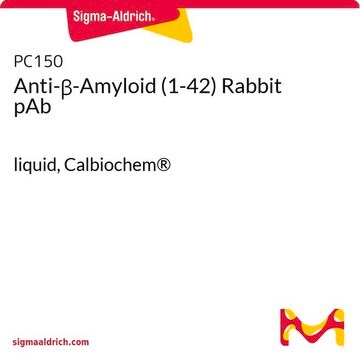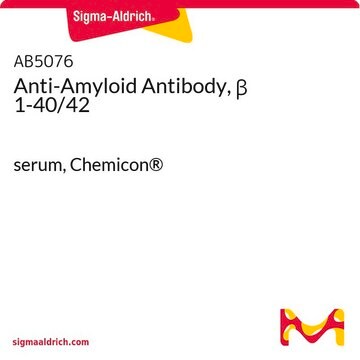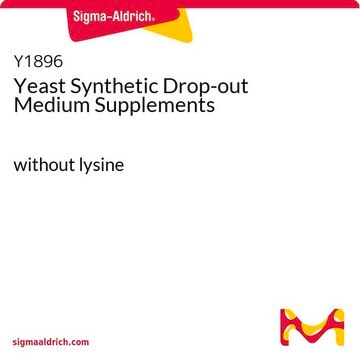A8978
Anti-β-Amyloid (13-28) antibody, Mouse monoclonal
clone BAM90.1, purified from hybridoma cell culture
Synonym(s):
Anti-Aβ
About This Item
Recommended Products
biological source
mouse
Quality Level
conjugate
unconjugated
antibody form
purified immunoglobulin
antibody product type
primary antibodies
clone
BAM90.1, monoclonal
form
buffered aqueous solution
species reactivity
human
packaging
antibody small pack of 25 μL
concentration
~2 mg/mL
technique(s)
enzyme immunoassay: 0.2-0.4 μg/mL using amyloid β-protein
immunohistochemistry: suitable
immunoprecipitation (IP): suitable
western blot: suitable
isotype
IgG1
UniProt accession no.
shipped in
dry ice
storage temp.
−20°C
target post-translational modification
unmodified
Gene Information
human ... APP(351)
General description
Monoclonal Anti β-Amyloid [13-28] recognizes the β-Amyloid peptide. The antibody epitope resides within amino acids 20-23.
Application
Immunohistochemistry (1 paper)
Physical form
Disclaimer
Not finding the right product?
Try our Product Selector Tool.
related product
Storage Class
10 - Combustible liquids
wgk_germany
WGK 3
flash_point_f
Not applicable
flash_point_c
Not applicable
ppe
Eyeshields, Gloves
Certificates of Analysis (COA)
Search for Certificates of Analysis (COA) by entering the products Lot/Batch Number. Lot and Batch Numbers can be found on a product’s label following the words ‘Lot’ or ‘Batch’.
Already Own This Product?
Find documentation for the products that you have recently purchased in the Document Library.
Customers Also Viewed
Our team of scientists has experience in all areas of research including Life Science, Material Science, Chemical Synthesis, Chromatography, Analytical and many others.
Contact Technical Service













